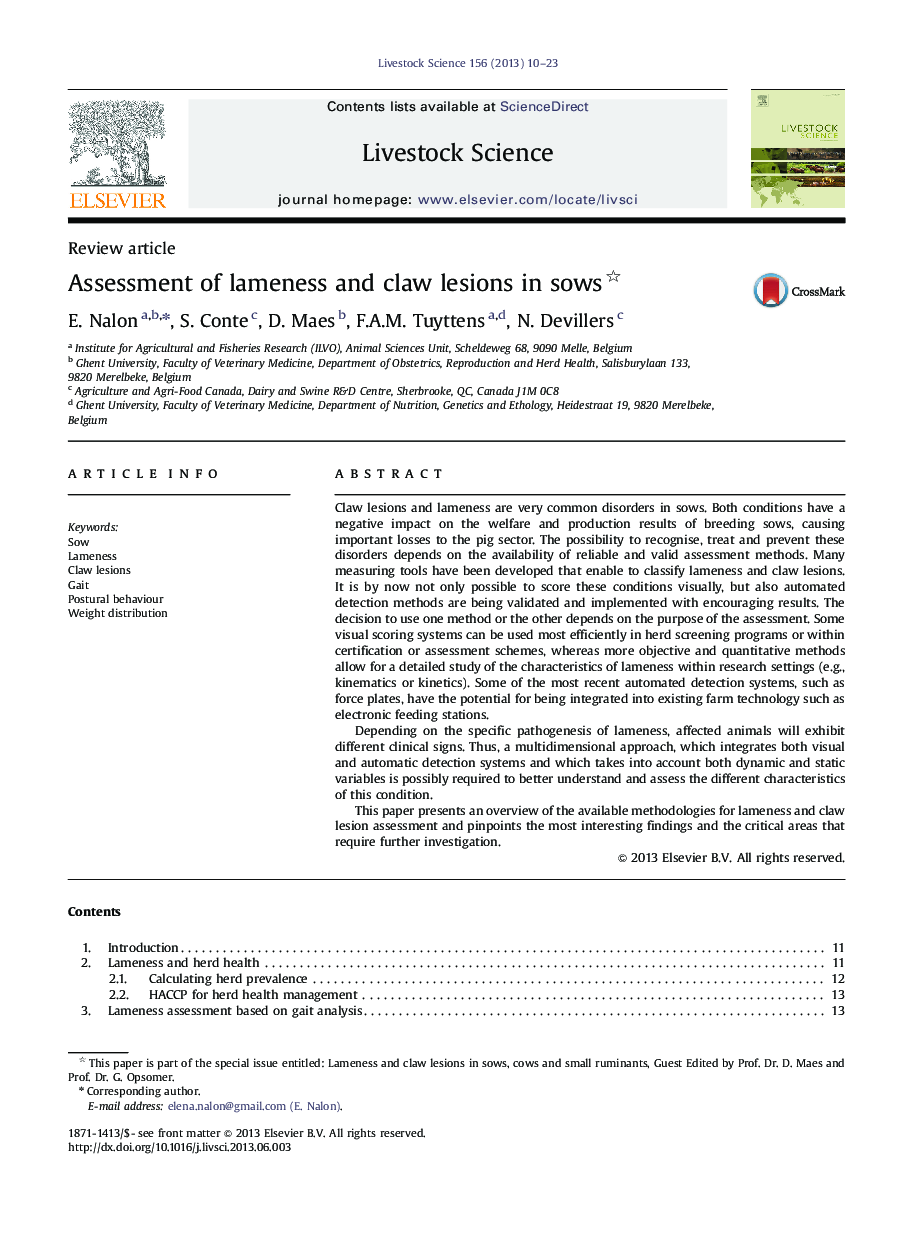| Article ID | Journal | Published Year | Pages | File Type |
|---|---|---|---|---|
| 2447348 | Livestock Science | 2013 | 14 Pages |
Claw lesions and lameness are very common disorders in sows. Both conditions have a negative impact on the welfare and production results of breeding sows, causing important losses to the pig sector. The possibility to recognise, treat and prevent these disorders depends on the availability of reliable and valid assessment methods. Many measuring tools have been developed that enable to classify lameness and claw lesions. It is by now not only possible to score these conditions visually, but also automated detection methods are being validated and implemented with encouraging results. The decision to use one method or the other depends on the purpose of the assessment. Some visual scoring systems can be used most efficiently in herd screening programs or within certification or assessment schemes, whereas more objective and quantitative methods allow for a detailed study of the characteristics of lameness within research settings (e.g., kinematics or kinetics). Some of the most recent automated detection systems, such as force plates, have the potential for being integrated into existing farm technology such as electronic feeding stations.Depending on the specific pathogenesis of lameness, affected animals will exhibit different clinical signs. Thus, a multidimensional approach, which integrates both visual and automatic detection systems and which takes into account both dynamic and static variables is possibly required to better understand and assess the different characteristics of this condition.This paper presents an overview of the available methodologies for lameness and claw lesion assessment and pinpoints the most interesting findings and the critical areas that require further investigation.
